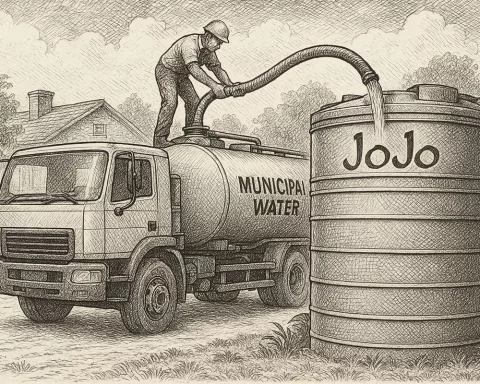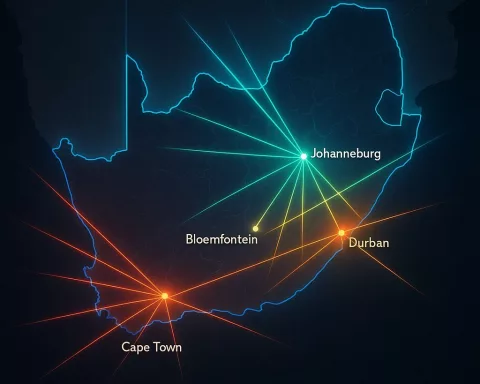Cape Town’s Sky Circle project is an exciting new plan to improve how people move around the city. By building a raised traffic circle, it will connect different neighborhoods better and make the MyCiTi bus service more efficient. While construction starts this weekend, with some temporary road changes, the city hopes that the long-term benefits will be worth it. This project is not just about roads—it symbolizes Cape Town’s vision for a greener and more connected future, ensuring that everyone can travel easily and sustainably.
What is Cape Town’s Sky Circle project?
Cape Town’s Sky Circle is a transformative urban mobility project aimed at enhancing connectivity between neighborhoods. By constructing an elevated traffic circle, it will facilitate better access to the MyCiTi bus service, improving transportation efficiency and promoting sustainable urban development over its 18-month construction period.
A Transformative Journey Begins
The energetic streets of Cape Town’s Lansdowne and Hanover Park neighborhoods are on the cusp of a significant transformation. This journey starts with the ambitious construction of the city’s first-ever Sky Circle, a project aimed at enhancing urban mobility and connectivity. As Cape Town embarks on this monumental endeavor, both motorists and residents should brace themselves for temporary inconveniences that will pave the way for long-lasting benefits.
This weekend marks the beginning of this transformative project. The City of Cape Town will convert the signalized intersection at Govan Mbeki Road (M9) and Jan Smuts Drive (M17) in Lansdowne into a temporary traffic circle. This change will lead to lane closures and traffic delays starting from 1 PM on Saturday, March 15, and continuing until 5 PM on Sunday, March 16. Once this initial phase is completed, motorists will use the traffic circle at this intersection throughout the duration of the Sky Circle’s construction. A towering crane, placed at the center of this traffic circle, will symbolize the ongoing project and the city’s forward movement toward urban innovation.
To ensure the safety of construction workers, the City will also install a temporary steel bridge over the northbound carriageway of Jan Smuts Drive. This bridge, with a height restriction of 4.3 meters, will remain throughout the construction period. The entire project is projected to span around 18 months, showcasing a significant commitment to improving Cape Town’s transportation infrastructure.
Enhancing Connectivity and Expanding MyCiTi Service
The freestanding elevated Sky Circle is not just an architectural marvel but also a crucial element of the City’s MyCiTi bus service expansion. This initiative aims to connect communities in the metro-southeast, such as Mitchells Plain and Khayelitsha, with the bustling hubs of Wynberg and Claremont. Upon completing the Sky Circle’s overhead structure, the City will reinstate the signalized intersection, restoring normal traffic flow while introducing a new era of commuter convenience and efficiency.
The announcement of this project follows a comprehensive transport analysis conducted by the City’s urban mobility directorate. This study examined the Foreshore Freeway Precinct, revealing that the existing freeway viaducts handle up to 7,000 vehicles per hour in both directions during peak periods. This analysis forms part of a broader scoping study aimed at developing an integrated transport and land use solution to address Cape Town’s growing congestion crisis.
During this period of infrastructural development, the Green Point area will also experience traffic delays and congestion. Road closures will be implemented as the city gears up for the much-anticipated Cape Town Carnival, set to captivate audiences on Saturday evening. The juxtaposition of celebratory events and infrastructural advancements highlights Cape Town’s dynamic spirit, a city perpetually in motion, balancing tradition with progress.
Historical Inspiration and Modernist Vision
As Cape Town undertakes this transformative project, it’s essential to reflect on the broader historical and artistic movements that have shaped urban landscapes globally. The Sky Circle, with its innovative design and practical promise, echoes the principles of Modernism—a movement that championed the integration of form and function. Modernist architects such as Le Corbusier envisioned cities as living organisms, where transportation networks serve as the veins and arteries, facilitating the flow of life and commerce.
The Sky Circle also draws inspiration from post-war reconstruction efforts in Europe and North America, where elevated highways and bridges symbolized progress and connectivity. In the United States, the Interstate Highway System, initiated by President Dwight D. Eisenhower in the 1950s, revolutionized travel and commerce, knitting together the vast American landscape with concrete and steel. Similarly, Cape Town’s Sky Circle aspires to bridge communities, fostering economic growth and social integration.
However, the Sky Circle is more than just an infrastructural project; it is a canvas for the city’s aspirations and a testament to human ingenuity. The crane that will dominate the temporary traffic circle is reminiscent of the towering structures depicted in the works of the Italian Futurists. Artists like Umberto Boccioni celebrated the dynamism and energy of modern life, capturing the essence of movement and change. The Sky Circle, in its own right, embodies this spirit, promising to inject vibrancy and efficiency into Cape Town’s urban fabric.
Pioneering Sustainable Urban Development
The City’s decision to prioritize the MyCiTi bus service expansion aligns with contemporary trends in sustainable urban development. Cities around the world are increasingly investing in public transportation systems to reduce carbon emissions and combat climate change. The Sky Circle represents a forward-thinking approach to urban mobility, encouraging residents to adopt public transport as a viable and eco-friendly alternative to private car use.
As construction begins, the temporary inconveniences faced by motorists and residents should be viewed through the lens of long-term gain. The Sky Circle is more than a traffic solution; it is a symbol of Cape Town’s commitment to innovation and sustainable growth. The project highlights the city’s resolve to create a more connected and efficient urban environment, benefiting current residents and future generations.
In Cape Town’s ongoing urban evolution, the Sky Circle will stand as a milestone, marking a moment of transition and progress. It serves as a reminder that cities, like living organisms, must adapt and grow, embracing change while honoring their history and heritage. As motorists navigate the temporary traffic circle and witness the construction of the Sky Circle, they become part of this transformative journey, contributing to the ongoing narrative of Cape Town’s development.
A Bold Step Toward a Connected Future
In conclusion, the construction of Cape Town’s first Sky Circle signifies a bold step toward enhancing urban mobility and connectivity. While the project will entail temporary disruptions, the long-term benefits promise to revolutionize transportation in the area. As the city balances the demands of progress with the needs of its residents, the Sky Circle emerges as a beacon of innovation, reflecting Cape Town’s commitment to building a sustainable and interconnected future.
“`markdown
What is Cape Town’s Sky Circle project?
Cape Town’s Sky Circle project is a transformative urban mobility initiative aimed at improving connectivity between neighborhoods. It involves the construction of an elevated traffic circle that enhances access to the MyCiTi bus service, thereby increasing transportation efficiency and promoting sustainable urban development. The project is anticipated to take 18 months to complete.
When does construction for the Sky Circle begin, and what should residents expect?
Construction for the Sky Circle begins this weekend, with temporary road changes starting from Saturday, March 15, at 1 PM until Sunday, March 16, at 5 PM. Residents should brace for lane closures and potential traffic delays at the intersection of Govan Mbeki Road and Jan Smuts Drive as the city converts this area into a temporary traffic circle.
How will the Sky Circle improve public transportation in Cape Town?
The Sky Circle will significantly enhance the MyCiTi bus service by providing better access for residents in neighborhoods like Mitchells Plain and Khayelitsha to critical hubs such as Wynberg and Claremont. This project aims to streamline traffic flow, facilitate commuter convenience, and promote the usage of public transport as a sustainable alternative to private vehicles.
What are the long-term benefits of the Sky Circle project?
The long-term benefits of the Sky Circle include improved urban mobility, reduced traffic congestion, and enhanced connectivity between various neighborhoods. The project supports Cape Town’s commitment to sustainable urban development, encouraging residents to utilize public transportation, thus reducing carbon emissions and promoting a greener future.
How does the Sky Circle project draw inspiration from historical and modernist movements?
The Sky Circle reflects principles of Modernism by integrating form and function into urban design. It draws parallels to post-war reconstruction efforts that emphasized elevated highways and bridges as symbols of progress. The project is a canvas for Cape Town’s aspirations, embodying the spirit of innovation and dynamism that characterizes modern life.
What precautions are being taken during construction to ensure safety?
To ensure the safety of construction workers and motorists, the City of Cape Town will install a temporary steel bridge over Jan Smuts Drive, featuring a height restriction of 4.3 meters. Additionally, the ongoing construction will involve lane closures and traffic management to mitigate inconveniences while prioritizing safety for all road users.
“`











